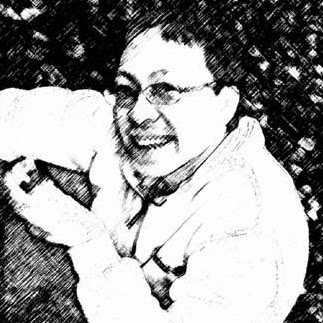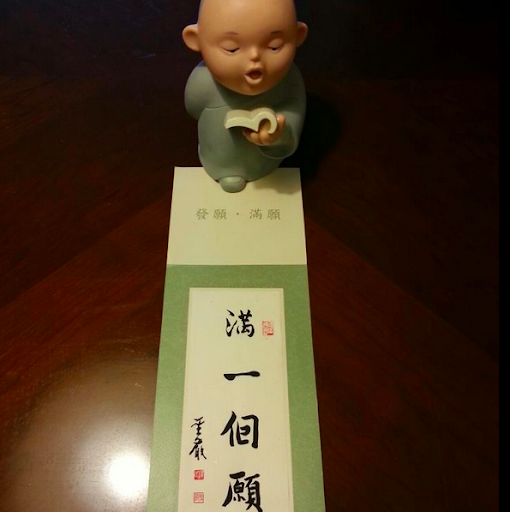Allan A Lin
age ~69
from Cupertino, CA
- Also known as:
-
- Allan Te Lin
- Allan A Tang
- Allan Soong
- Allan In
- Phone and address:
-
10555 Merriman Rd, Cupertino, CA 95014
4083290808
Allan Lin Phones & Addresses
- 10555 Merriman Rd, Cupertino, CA 95014 • 4083290808
- Reno, NV
- San Jose, CA
- Torrance, CA
- 10555 Merriman Rd, Cupertino, CA 95014
Work
-
Position:Professional/Technical
Education
-
Degree:Graduate or professional degree
Emails
Vehicle Records
-
Allan Lin
view source -
Address:10555 Merriman Rd, Cupertino, CA 95014
-
VIN:4JGBB86E37A278217
-
Make:MERCEDES-BENZ
-
Model:M-CLASS
-
Year:2007
Us Patents
-
High-Resolution, High-Precision Solid-State Potentiometer
view source -
US Patent:6555996, Apr 29, 2003
-
Filed:Nov 13, 2001
-
Appl. No.:10/007602
-
Inventors:Joseph Drori - San Jose CA
Allan Ming-Lun Lin - Fremont CA -
Assignee:Xicor, Inc. - Milpitas CA
-
International Classification:H03H 100
-
US Classification:323369, 323297, 323298, 323354
-
Abstract:Disclosed are solid-state potentiometers having high resolution and high accuracy. An exemplary potentiometer comprises a first main terminal, a second main terminal, a wiper terminal, and a resistor stack comprising a plurality M of resistors coupled in series to one another at a plurality of M-1 internal nodes. Each of the resistors in the stack has substantially the same value of R ohms. The potentiometer further comprises a first variable resistance network coupled between one end of the resistor stack and the potentiometers first main terminal, and a second variable resistance network coupled between the other end of the resistor stack and the potentiometers second main terminal. The first variable resistance network has a variable resistance value R which varies between zero ohms and R ohms. The second variable resistance network has a variable resistance value R which is maintained substantially at value of (R -R ). The wiper terminal is selectively coupled to one of the internal nodes of the resistor stack, or to one of the ends of the resistor stack, to provide a coarse setting of the potentiometers wiper position.
-
Method And Circuit For Controlling Power Amplifiers
view source -
US Patent:6657499, Dec 2, 2003
-
Filed:Jan 18, 2002
-
Appl. No.:10/054703
-
Inventors:Allan Ming-Lun Lin - Fremont CA
-
Assignee:Xicor, Inc. - Milpitas CA
-
International Classification:H03F 304
-
US Classification:330296, 330285, 330298
-
Abstract:A bias controller includes a bias detector, a reference comparator, a memory component, and a reference voltage. The bias detector is operable to detect a bias current associated with a device controlled by the bias controller and produce a proportional sensed bias voltage. The reference comparator is operable to compare the bias voltage to a reference voltage and produce a first control signal operable to adjust a bias output of the bias controller. The memory component stores a plurality of reference voltage settings, one for each mode of operation of the device, the memory component including a mode setting input and a reference voltage output signal. The reference voltage adjustment circuit adjusts the reference voltage applied to the reference comparator in accordance with the mode of the device as controlled by the reference voltage output signal.
-
Power Converter Controller Controlled By Variable Reference Voltage Generated By Dual Output Digital To Analog Converter
view source -
US Patent:7589983, Sep 15, 2009
-
Filed:Nov 8, 2006
-
Appl. No.:11/557953
-
Inventors:Allan Ming-Lun Lin - Pleasanton CA, US
Mark Dean Eason - Hollister CA, US
Mark Robert Muegge - Cupertino CA, US -
Assignee:iWatt Inc. - Los Gatos CA
-
International Classification:H02M 3/335
H03H 1/00 -
US Classification:363 2113, 323367
-
Abstract:A power converter includes a switch controller having a dual output digital-to-analog converter for generating a variable reference voltage and a knee voltage offset from the reference voltage by a predetermined voltage. The variable reference voltage is generated based on a reconstructed representation of output voltage of the power converter in a previous switching cycle. Comparators compare the variable reference voltage and the variable knee voltage to a sensed output of the power converter in a first switching cycle. A digital logic of the switch controller receives signals from the comparators and determines a pulse signal for controlling an on-time and an off time of a switch in a second switching cycle.
-
Power Converter Controller Ic Having Input Voltage Pin With Multiple Functions
view source -
US Patent:7880447, Feb 1, 2011
-
Filed:Nov 9, 2006
-
Appl. No.:11/558143
-
Inventors:Allan Ming-Lun Lin - Pleasanton CA, US
Junjie Zheng - Santa Clara CA, US
Jiang Chen - Santa Clara CA, US -
Assignee:iWatt Inc. - Los Gatos CA
-
International Classification:H02J 7/00
-
US Classification:320166, 363 2113, 323283
-
Abstract:A controller integrated circuit (IC) for controlling a power converter uses its input voltage pin with a plurality of functions, including receiving an input voltage to the power converter, charging an external startup capacitor through charging circuitry coupled internally to the input voltage pin, and also receiving a test signal for programming a programmable resistance in an input voltage scale down circuitry coupled to the input voltage pin. Use of the input voltage pin with a plurality of functions reduces the number of pins required in the controller IC, thereby reducing the cost of manufacturing the controller IC.
-
1-Wire Communication Protocol And Interface Circuit
view source -
US Patent:8324824, Dec 4, 2012
-
Filed:Jan 29, 2010
-
Appl. No.:12/696987
-
Inventors:Allan Ming-Lun Lin - Pleasanton CA, US
Leonid A. Neyman - Sunnyvale CA, US -
Assignee:IXYS Corporation - Milpitas CA
-
International Classification:H05B 41/16
-
US Classification:315247, 315307, 315360
-
Abstract:A 1-wire communication protocol and interface circuitry for communication between a host controller and a LED driver is provided. The 1-wire communication protocol is configured such that both PWM signals and DC current setting commands for programming the LED driver may be transmitted from the host controller to the LED driver via the same 1-wire interface. The 1-wire communication protocol uses the length of the pulses (pulse width), rather than the number of pulses, to distinguish between different modes of communication (PWM signal transmission mode or command pulse transmission mode) and different commands of the same type (specific DC current programming commands, or specific average PWM drive current for the LED, within each transmission mode). Because the same 1-wire interface is used for transmitting both PWM signals and DC current commands, integrated circuits for the host controller and the LED driver do not require an additional wire or pin.
-
Dynamic Drive Of Switching Transistor Of Switching Power Converter
view source -
US Patent:8576586, Nov 5, 2013
-
Filed:Sep 28, 2007
-
Appl. No.:12/678690
-
Inventors:Junjie Zheng - Santa Clara CA, US
Jun Zheng - Shenzhen, CN
Andrew Kwok-Cheung Lee - Santa Clara CA, US
John William Kesterson - San Jose CA, US
Allan Ming-Lun Lin - Pleasanton CA, US
Hien Huu Bui - San Jose CA, US
Carrie Seim - Campbell CA, US
Yong Li - Campbell CA, US -
Assignee:iWatt Inc. - Campbell CA
-
International Classification:H02M 3/335
H02M 3/337
H02M 3/338 -
US Classification:363 2113, 363 2117, 363 2118
-
Abstract:A switching power converter comprises a transformer (), a switch () coupled to the transformer (), and a switch controller () coupled to the switch () for generating a switch drive signal () to turn on or off the switch (). The drive current of the switch drive signal () is adjusted dynamically according to line or load conditions within a switching cycle and/or over a plurality of switching cycles. The magnitude of the drive current can be dynamically adjusted within a switching cycle and/or over a plurality of switching cycles, in addition to the pulse widths or pulse frequencies of the drive current.
-
1-Wire Communication Protocol And Interface Circuit For High Voltage Applications
view source -
US Patent:20130028338, Jan 31, 2013
-
Filed:Oct 8, 2012
-
Appl. No.:13/647139
-
Inventors:Allan Ming-Lun Lin - Pleasanton CA, US
-
Assignee:IXYS Corporation - Milpitas CA
-
International Classification:H04L 25/00
-
US Classification:375257
-
Abstract:A system for communicating with a host using control signals over a 1-wire interface is disclosed. The system includes a driver coupled to the host by the 1-wire interface. Control signals are transmitted from the host to the driver for decoding by the driver controller. The control signals are pulse width modulation format signals which are interpreted by the driver as binary encoded command mode signals or analog encoded command mode signals, depending upon when the signals are received in relation to a preamble pulse and a post-amble pulse.
-
Dynamic Drive Of Switching Transistor Of Switching Power Converter
view source -
US Patent:20130279209, Oct 24, 2013
-
Filed:Jun 18, 2013
-
Appl. No.:13/920914
-
Inventors:Jun Zheng - Santa Clara CA, US
Andrew Kwok-Cheung Lee - Union City CA, US
John William Kesterson - Seaside CA, US
Allan Ming-Lun Lin - Pleasanton CA, US
Hien Huu Bui - San Jose CA, US
Carrie Seim - Campbell CA, US
Yong Li - San Jose CA, US -
International Classification:H02M 3/335
-
US Classification:363 2112
-
Abstract:The drive current of the switch in a switching power converter is adjusted dynamically according to line or load conditions within a switching cycle and/or over a plurality of switching cycles. The magnitude of the switch drive current can be dynamically adjusted within a switching cycle and/or over a plurality of switching cycles, in addition to the pulse widths or pulse frequencies of the switch drive current.
Resumes

Allan Lin
view sourceName / Title
Company / Classification
Phones & Addresses
President
AMERICAN BALLAST CORP
Nonclassifiable Establishments
Nonclassifiable Establishments
47800 Fremont Blvd, Fremont, CA 94538
Flickr
Classmates

Allan Lin | Thunderbird, ...
view source
Thunderbird, the American...
view sourceGraduates:
Tina Tian (2000-2002),
Allan Lin (2001-2003),
Arly Rice (1986-1988),
Aneesa Jones (1992-1994),
Joseph Passalaqua (1994-1995)
Allan Lin (2001-2003),
Arly Rice (1986-1988),
Aneesa Jones (1992-1994),
Joseph Passalaqua (1994-1995)

Anning S. Prall Intermedi...
view sourceGraduates:
Sharon Torbyn (1963-1965),
Alan Lin (1969-1972),
Richard Johnson (1969-1972),
Erin Rowe (1968-1971)
Alan Lin (1969-1972),
Richard Johnson (1969-1972),
Erin Rowe (1968-1971)
News

Asia higher; transports helped by lower oil price
view source- The overnight decline on Wall Street did not have much impact on the Asian markets, but the fear of a Japan crisis causing supply-chain breakdown continues to loom after Japan raised the radiation (crisis) level Tuesday, said Concord Securities analyst Allan Lin in Taiwan.
- Date: Apr 13, 2011
- Category: Business
- Source: Google

Allan Jw Lin
view source
Allan Lin
view source
Allan Lin
view source
Allan Lin
view source
Allan Lin
view source
Allan Lin
view source
Allan Lin
view sourceYoutube
Googleplus

Allan Lin
Lived:
Portland, Oregon
Portland, OR
San Francisco, CA
San Jose, CA
Portland, OR
San Francisco, CA
San Jose, CA

Allan Lin
Work:
Sony Pictures Entertainment - Project Manager
About:
Culver City
Tagline:
Hi!

Allan Lin

Allan Lin

Allan Lin

Allan Lin

Allan Lin

Allan Lin
Plaxo

Allan Lin
view sourcewinmate
Get Report for Allan A Lin from Cupertino, CA, age ~69













